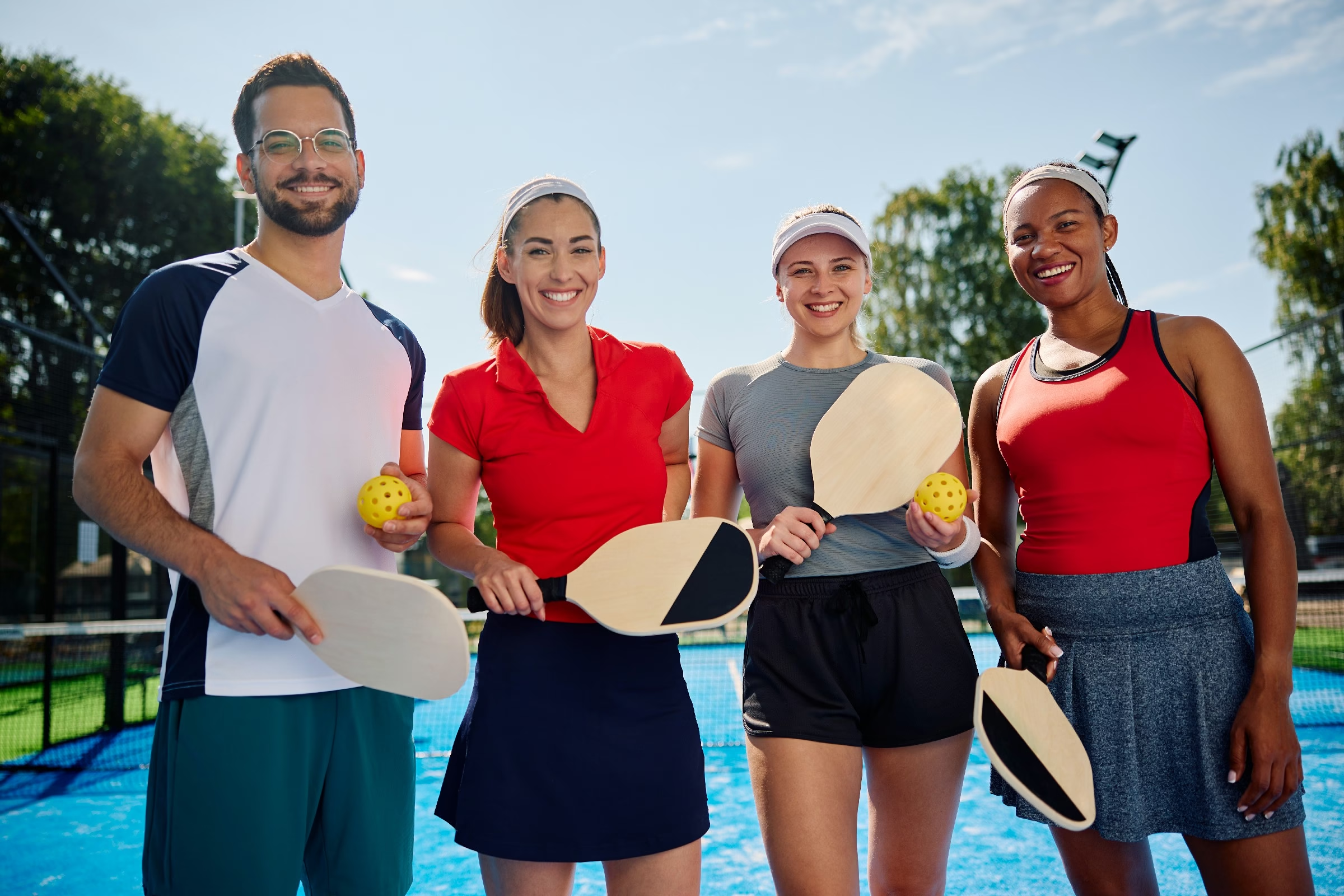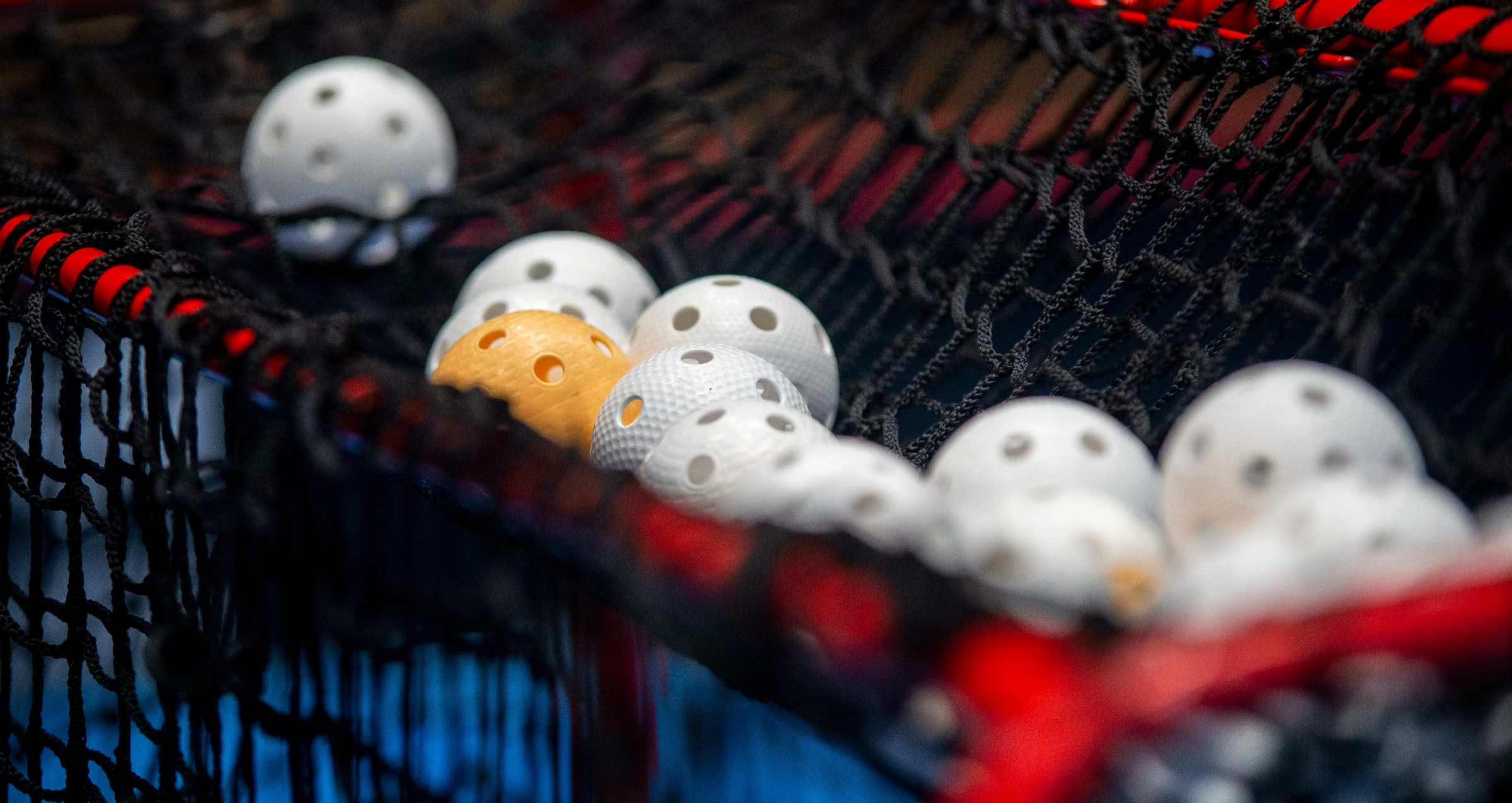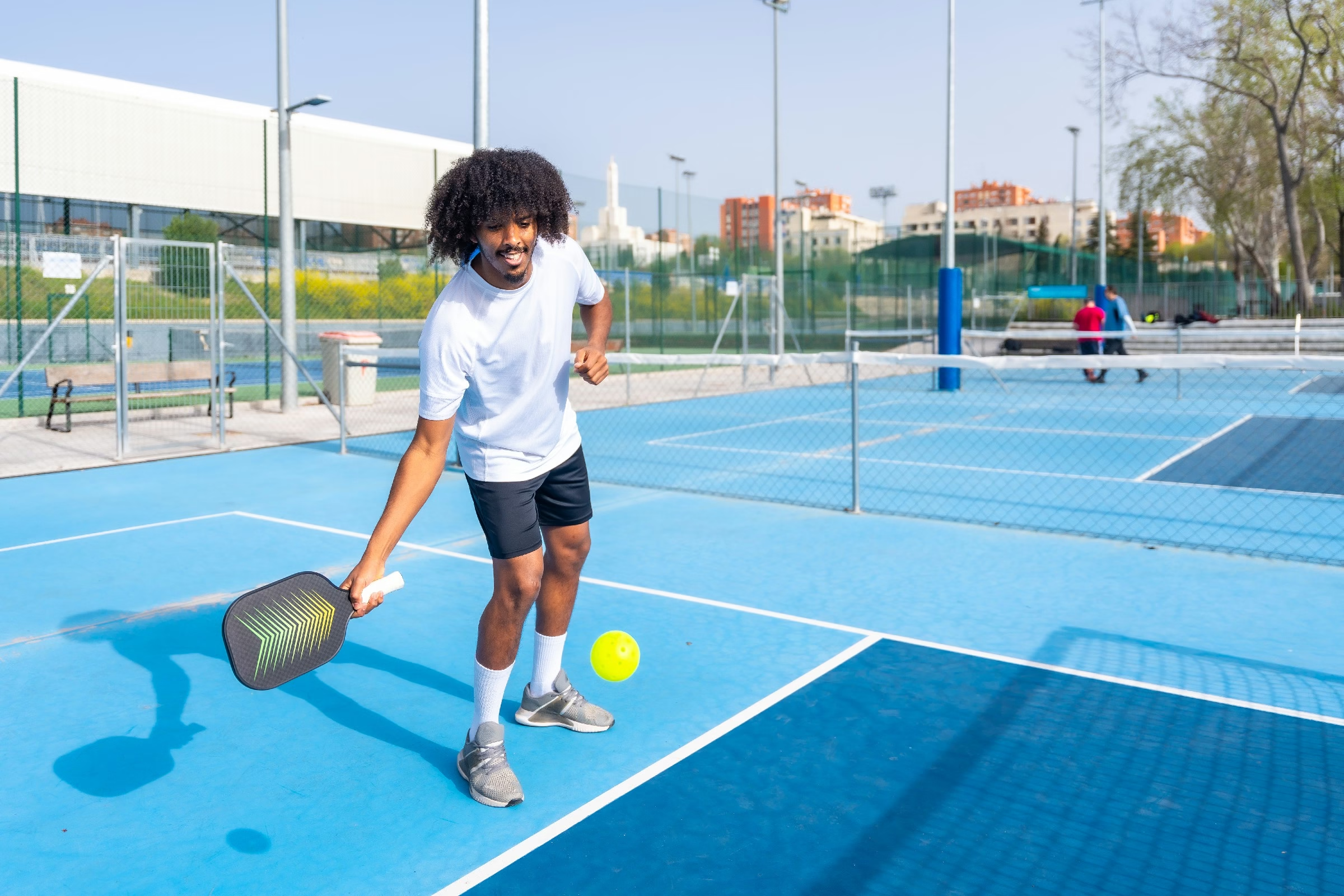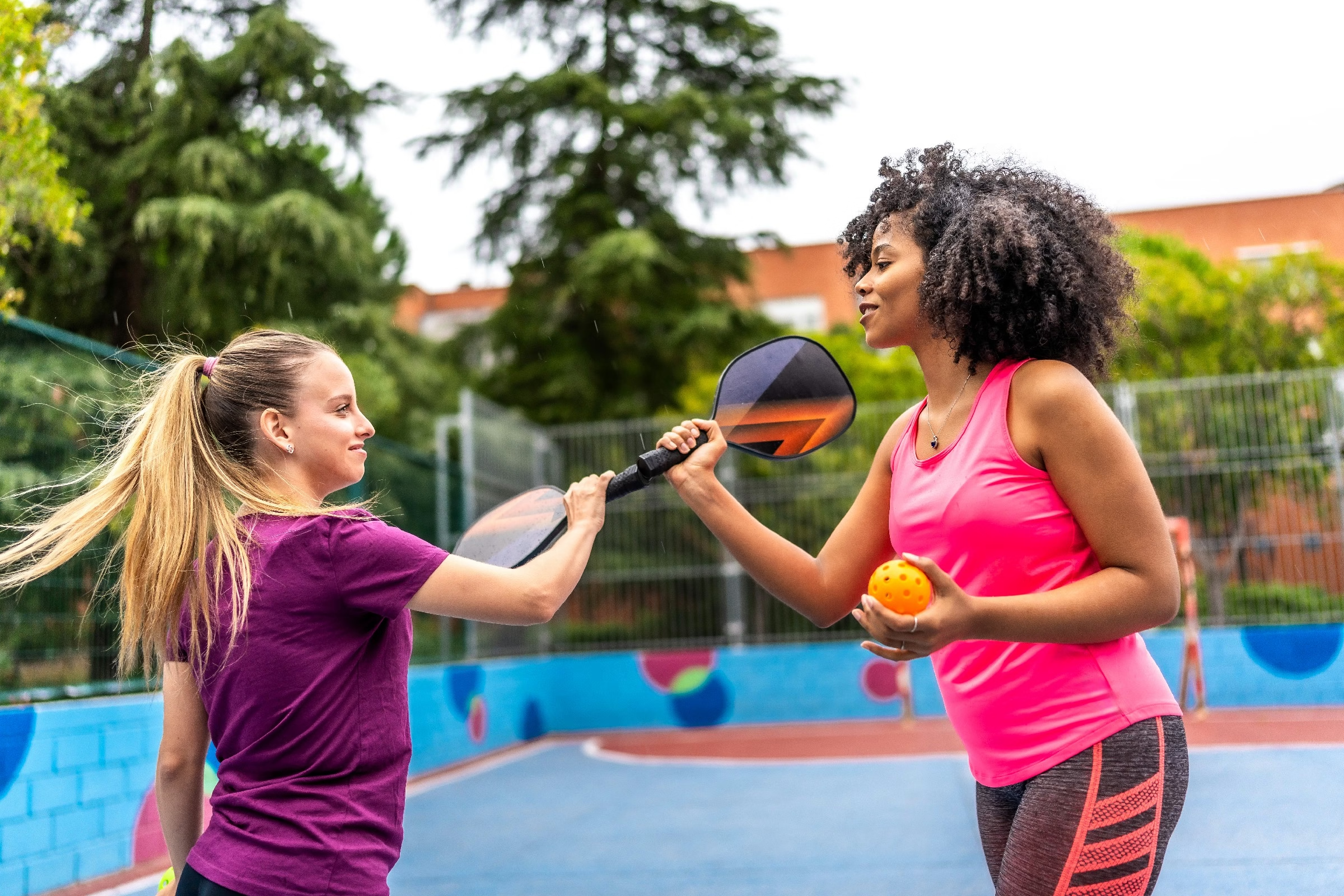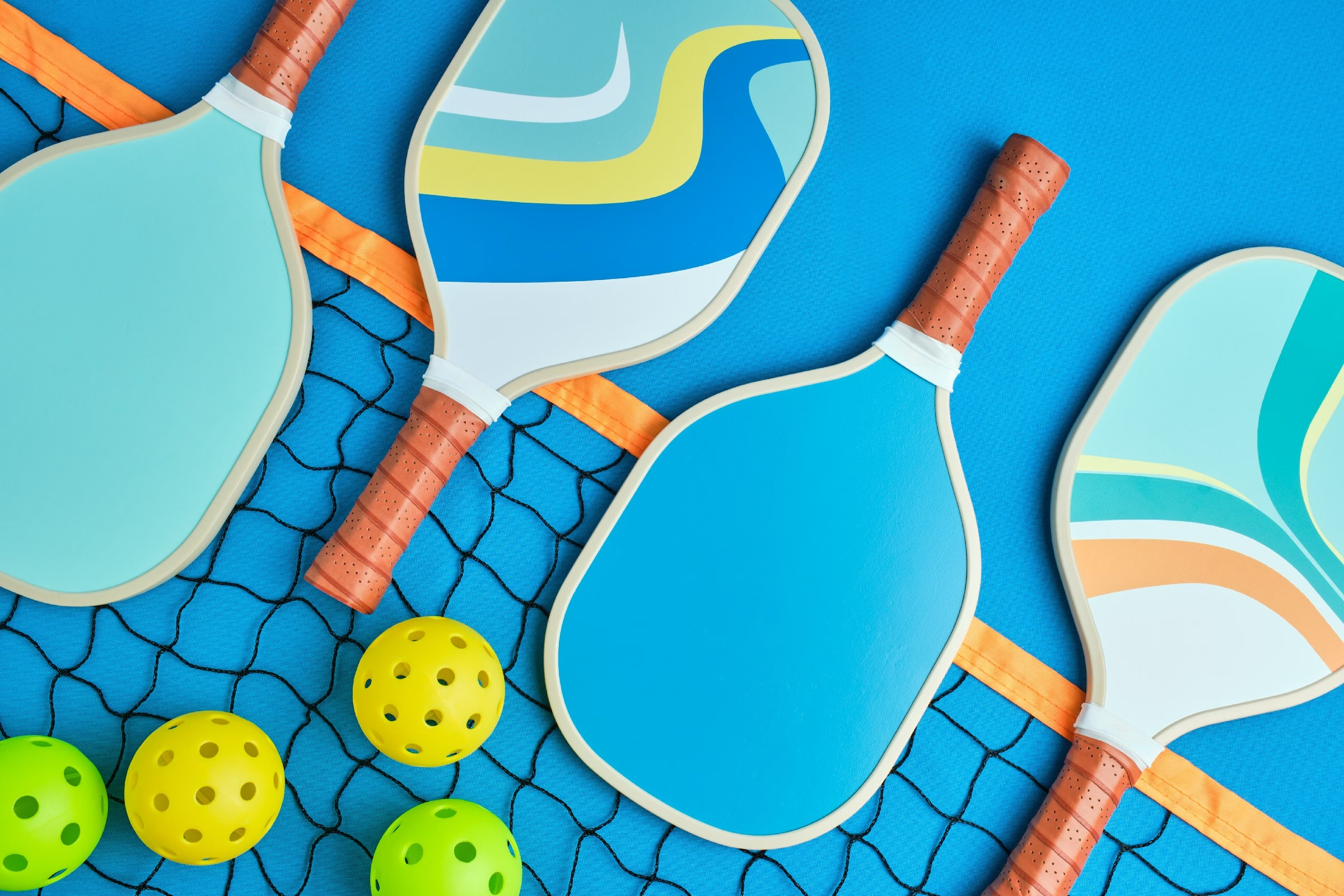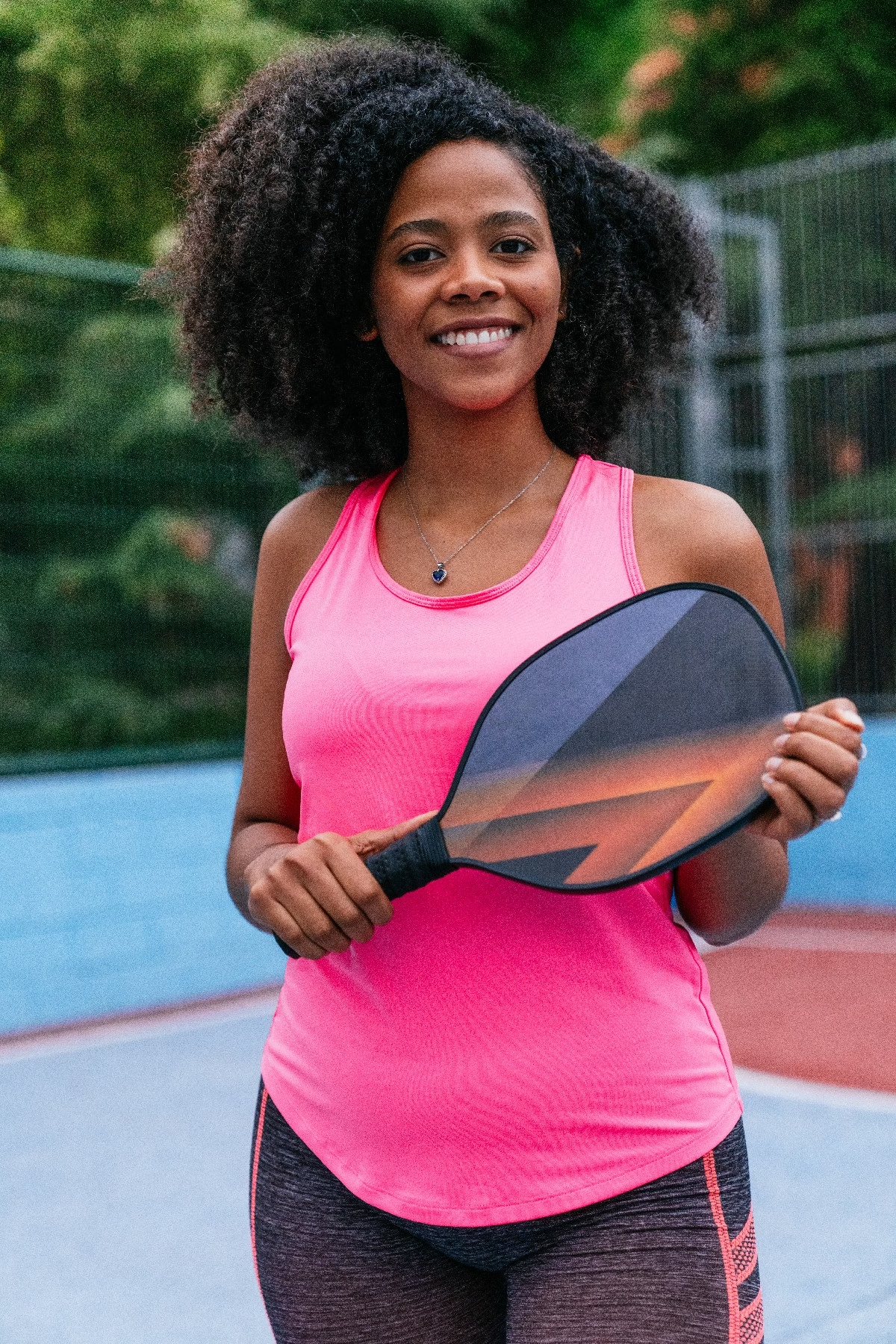Blog
what grip to use for pickleball

Finding Your Perfect Grip: A guide to Pickleball Mastery
When stepping onto the pickleball court, the excitement is palpable. The sound of the paddle striking the ball,the thrill of fast rallies,and the camaraderie that blossoms between players all create an invigorating atmosphere. Yet, amidst this vibrant energy, one crucial element can make or break your game—the grip of your paddle. While players often focus on techniques and strategies, the right grip serves as the foundation for skillful play. In this article, we will explore the various types of grips used in pickleball, their impact on performance, and how to choose the one that best suits your style.Whether you’re a novice eager to learn or a seasoned player looking to refine your technique, understanding the nuances of grip can elevate your game to new heights. Let’s dive into the world of pickleball grips and discover the key to unlocking your full potential on the court.
Table of Contents
- Understanding the Importance of Grip in Pickleball
- Exploring the Different Types of Grips for Optimal Performance
- the Continental Grip: A Versatile Choice for All players
- The Eastern Grip: Enhancing Power and Spin in Your Game
- The Semi-Western Grip: Finding the Perfect Balance
- How to Choose the Right Grip Based on Your Playing Style
- Q&A
- Key Takeaways
Understanding the Importance of Grip in Pickleball
When it comes to excelling in pickleball, the meaning of grip cannot be overstated. A proper grip enables players to maintain control over their shots, ensuring that every swing is both precise and effective. Without the right grip, you may find yourself struggling to connect wiht the ball, leading to missed opportunities and errant shots. By finding a grip that feels cozy and secure in your hand, you set the stage for an enjoyable and productive game.
There are several types of grips that players can explore, each offering distinct advantages. Understanding these grips can substantially impact your performance on the court.Some of the most popular include:
- Eastern Grip: Ideal for players who prefer a balanced mix of power and spin.
- Western Grip: Rich in topspin, this grip suits aggressive net players.
- Continental Grip: Versatile and adaptable, perfect for changing styles.
Your grip should be adjusted based on the specific shots you intend to execute. A common practice is to position your hand on the paddle in relation to the type of stroke you wish to make. The following table illustrates how different grips can enhance various strokes:
| Grip Type | Best for | Shot Type |
|---|---|---|
| Eastern | All-around play | Forehand & Backhand |
| Western | Heavy topspin | Powerful groundstrokes |
| Continental | Volleys & Serves | Quick transitions |
Exploring the Different Types of Grips for Optimal Performance
When it comes to mastering pickleball, the type of grip you choose can significantly influence your performance on the court. Players often gravitate towards three primary grips, each offering unique advantages based on individual playing styles. Understanding these grips not only enhances ball control but also improves shot precision, maneuverability, and overall confidence in gameplay. Here are some of the most popular grips:
- The Continental Grip: Often regarded as the fundamental grip for versatility, it is perfect for executing serves, volleys, and overheads. this grip allows players to transition quickly between shots, making it a favored choice for beginners and experienced players alike.
- The Eastern Grip: This grip is optimal for players who enjoy a more aggressive style and prefer strong forehands. It allows for greater topspin and is particularly effective for handling high balls, promoting a powerful and assertive playing approach.
- The Western Grip: Favored by players who like to hit with extreme topspin, the Western grip is ideal for those looking to dominate rallies with heavy shots. This grip can be a double-edged sword; while it provides excellent spin, it can also limit the types of shots effectively executed.
To help visualize the differences between these grips, the following table summarizes their distinct characteristics and the scenarios in which each shines:
| Grip Type | Best For | Playing Style |
|---|---|---|
| Continental | All-around skills | Defensive & Offensive |
| Eastern | Aggressive Forehands | Power Players |
| Western | Topspin Shots | Spin attack |
Selecting the right grip depends significantly on your comfort and playing style. Experimenting with these grips during practice sessions can yield valuable insights into how each affects your performance.It’s essential to take the time to find the grip that feels most natural and effective for your game, adapting to the demands of pickleball as you progress and develop your skills. Remember, the perfect grip can be the key to unlocking your full potential on the court!
The Continental Grip: A Versatile Choice for All Players
the Continental Grip stands out as a remarkable option for pickleball players at every level. Its origins in tennis make it inherently familiar yet adaptable for the unique demands of this paddle sport. By positioning the paddle in a way that resembles a handshake, players enjoy a grip that combines comfort with control.This orientation allows for a seamless transition between shots, making it particularly favorable for those who employ a variety of techniques and strategies during play.
One of the main advantages of adopting this grip is its versatility. Players can easily execute a range of strokes, such as:
- Serves - Deliver powerful and accurate service shots.
- Volleys - Effortlessly handle quick exchanges near the net.
- Dinks - Use finesse for soft shots that drop just over the net.
- Topspin and Backspin - Manipulate the ball’s spin to gain an edge.
This versatility allows players to respond quickly to opponents’ tactics,enhancing their overall game performance. Many players find that a consistent grip not only boosts confidence but also encourages a more natural flow in their gameplay, akin to an artist wielding a brush to create a masterpiece.
Additionally, adapting to the Continental grip can be particularly beneficial for beginners, offering simplicity without sacrificing advanced shot capabilities. As players develop their skills, the grip allows for enhancements and adjustments, ensuring a growth trajectory for game play. It’s also widely favored by seasoned athletes who appreciate its effectiveness across various playing styles. Whether you prefer aggressive gameplay or a more strategic approach, this grip serves as a solid foundation for elevating your pickleball experience.
The Eastern Grip: Enhancing Power and Spin in Your Game
The Eastern Grip is a popular choice among pickleball enthusiasts looking to maximize both power and spin in their shots.This grip is characterized by placing the base knuckle of your index finger on the third bevel of the paddle handle, which allows for a balanced approach to offensive and defensive play. By adopting this grip,players can achieve a more natural racket angle,resulting in a versatile set of strokes that can tackle various game situations effectively.
One of the notable advantages of the Eastern Grip is its ability to generate significant spin. The grip allows players to easily manipulate the paddle face during ball impact, which is essential for producing topspin and slice shots. this ability proves beneficial in keeping opponents off balance,as well as enhancing the trajectory and depth of shots. Here are some key benefits of utilizing the eastern Grip:
- increased power: the grip encourages a full swing, translating to powerful shots.
- Enhanced versatility: It facilitates a range of strokes, including forehands and backhands.
- Improved touch: Players can achieve delicacy in volleys and dinks.
To effectively implement the Eastern Grip in your gameplay, it’s essential to practice maintaining the grip consistently across different shots. Start by incorporating drills focused on striking the ball from varying heights and angles, ensuring that your grip remains steady.Below is a simple table showcasing some common shot types and their ideal paddle angles when using the Eastern Grip:
| Shot Type | Ideal paddle Angle |
|---|---|
| Forehand Drive | 45° |
| Backhand Slice | 30° |
| Topspin Lob | 60° |
The Semi-Western Grip: Finding the Perfect balance
The semi-western grip strikes an impeccable balance between power and control,making it a popular choice among pickleball enthusiasts. This grip allows players to generate topspin while still maintaining the ability to slice the ball when necessary. By positioning the paddle at a slight angle, players can easily adapt their stroke for both aggressive drives and softer shots, ensuring they remain versatile on the court.
To adopt the semi-western grip effectively, players should position their dominant hand on the paddle with the base knuckle of their index finger resting on the third bevel. The fingers should wrap around the handle comfortably, allowing for a relaxed yet secure grip. This setup facilitates an optimal wrist motion that maximizes both spin and trajectory control.Here are some key advantages of using the semi-western grip:
- Enhanced topspin: Ideal for pushing the ball deep into the opponent’s court.
- Adaptability: Smoothly transitions between slice and topspin shots.
- Improved volleying: Provides quick response time at the net.
While the semi-western grip can boost performance, it’s essential to practice consistently to master the nuances it brings. Players should also be aware of their body mechanics and footwork, as these elements are crucial to executing shots effectively.Regular drills focusing on grip adjustments not only elevate your skills but also enhance muscle memory, making you a more adaptable player on the court.
How to Choose the Right Grip Based on Your playing Style
Choosing the right grip in pickleball is essential for enhancing your performance, and it often depends significantly on your personal playing style. For players who rely on aggressive net play, a continental grip can be an excellent choice. This grip allows for quick hand adjustments and is effective for volleys and overheads. Players utilizing this grip often favor maneuverability and speed, which are crucial for dominating at the net.
On the other hand, if your strength lies in baseline rallies and consistent groundstrokes, the eastern grip may serve you better. This grip provides a solid platform for executing topspin and slice shots, making it easier to control the ball during long exchanges. Players who prefer to engage in control and placement, as opposed to sheer power, will find this grip advantageous for constructing points and setting up favorable scenarios.
Lastly, for those with a well-rounded playing style who frequently adapt to the situation, a semi-western grip is a versatile option. This grip strikes a balance between power and control, allowing for effective topspin shots while maintaining the ability to manipulate the ball’s trajectory. This adaptability makes it a popular choice among intermediate and advanced players. Consider experimenting with different grips in practice to assess which aligns best with your unique approach to the game.
Q&A
Q&A: Finding the Perfect Grip for Pickleball
Q: Why is grip choice critically important in pickleball?
A: The grip you choose can significantly influence your control, power, and comfort on the court. A proper grip allows for better ball placement and can definitely help reduce the risk of injuries, particularly to your hands and wrists.
Q: What are the main types of grips used in pickleball?
A: The three primary grips are the Continental grip, the Eastern grip, and the Western grip. Each offers unique advantages depending on your playing style and shot preference.
Q: Can you explain the Continental grip?
A: The Continental grip is often considered the all-purpose grip. To achieve it, imagine holding a hammer — you place the base knuckle of your index finger on the second bevel of the paddle. this grip is versatile and works well for serving, volleys, and overheads. It’s especially popular among players who frequently transition between different shots.
Q: What’s the difference with the Eastern grip?
A: The Eastern grip involves placing your index finger’s base knuckle on the third bevel of the paddle. This grip provides a good balance of control and spin, making it ideal for forehand strokes and groundstrokes. Players frequently enough find it easier to hit topspin with this grip.
Q: and what about the Western grip?
A: The Western grip can be identified by positioning the base knuckle of your index finger on the fourth bevel. This grip is favored by players who generate significant topspin, especially on forehands. It can be a bit more challenging to master but is rewarding for those looking to elevate their spin game.
Q: How do I decide which grip is right for me?
A: Your choice of grip should take into consideration your playing style, the shots you prefer, and your comfort level. Experiment with all three grips to see which feels the most natural and allows you to execute your shots effectively.
Q: Are there any common mistakes to avoid when choosing a grip?
A: One common mistake is gripping the paddle too tightly. A relaxed grip allows for better hand movement and can improve shot precision. Additionally, players often forget that grip size matters — if a grip is too small or too large, it can lead to discomfort and decreased performance.Q: Can I change grips during a game?
A: Absolutely! Many players switch grips based on the shot they need to make. Adapting your grip during a match can showcase versatility and help you handle different situations effectively.
Q: What’s the best way to practice my grip?
A: Start by dedicating time during practice to focus solely on grips. Engage in drills that require you to switch grips frequently, such as volleying, serving, and hitting groundstrokes. Over time, you’ll develop muscle memory, allowing you to transition smoothly between grips during gameplay.
Q: Any final tips for players regarding grip choice?
A: Listen to your body and ensure your grip feels comfortable, especially during extended play. Don’t be afraid to seek advice from coaching professionals, and always keep an open mind about refining your technique. The right grip can be a game-changer in your pickleball experience!
Key Takeaways
As you step onto the pickleball court, remember that the right grip can frequently enough be the key to unlocking your full potential. Whether you opt for the classic Eastern grip for its versatility, the finesse of the Western grip for a powerful topspin, or the pragmatic Continental grip for all-around play, the choice ultimately boils down to your personal style and comfort. Experimenting with different grips not only enhances your performance but also enriches your enjoyment of the game. So, take a moment to explore, adjust, and refine your technique. With the right grip in hand, you’re not just playing pickleball; you’re shaping your own path to mastery and fun. Now, go forth and let your paddle tell your story!

